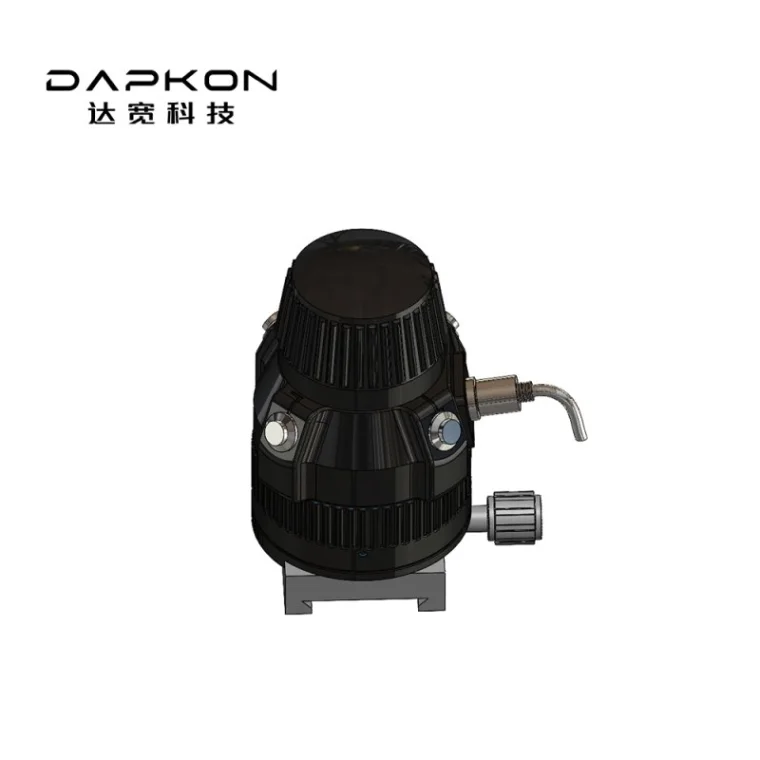- This topic is empty.
-
AuthorPosts
-
2025-08-18 at 1:40 pm #9732
In the wave of intelligent manufacturing, industrial robots have evolved from auxiliary labor to the main force of production. However, for robots to truly realize their advantages of high precision and high efficiency, they cannot do without effective human-machine interaction tools. Robotic guide handles have emerged precisely in this context, not only simplifying the programming process but also enhancing the intuitiveness and flexibility of robot operation.
Take Dapkon's independently developed guide handle as an example. Based on its proprietary robot dynamics engine and AI technology, this product provides standard Fanuc drag-based teaching solutions for applications such as grinding, polishing, and assembly, and is compatible across brands. This innovative solution is changing the way robot users work, making production lines smarter and more efficient.
1. What is a Robotic Guiding Handle?
A robot guiding handle is a manual control device installed on the end effector or joint of an industrial robot. The operator can directly guide the robot's movements by dragging the handle. It works by converting operator-applied force and displacement signals into robot control commands and recording the movement path, thereby enabling drag-based teaching. Traditional robot programming often requires specialized teach pendant programming knowledge. However, the guide handle uses physical guidance, allowing the operator to complete path planning as if "leading the robot for a walk." This not only lowers the programming threshold but also significantly reduces debugging time.
2. Advantages of the Dapkon Guide Handle
Compared to similar products on the market, the robot guide handle developed by Dapkon achieves technological breakthroughs in multiple aspects:
Proprietary Robot Dynamics Engine: Through precise dynamic modeling, the guide handle rapidly responds to operator movements, with a response speed of up to 4ms, ensuring smooth and lag-free robot movement during dragging.
AI Intelligent Path Optimization: Utilizing AI technology, the guide handle automatically optimizes the taught path, reducing redundant movements and improving robot motion efficiency and accuracy.
Strong Cross-Brand Compatibility: Compatible not only with Fanuc robots, but also seamlessly integrates with industrial robots from a variety of major brands, ensuring a consistent operating experience across different production lines and equipment from different manufacturers.
Simplified Operation: Excellent versatility in recording points allows users to directly record and recall paths without tedious parameter settings. Ergonomic Design: The handle is ergonomically designed for a comfortable grip, reducing fatigue caused by prolonged operation.

3. Application Scenarios of Robotic Guide Handles
3.1 Electronic Assembly
In the assembly of electronic components, small parts are required, and high precision is crucial. Traditional programming methods are time-consuming and inflexible. However, the guide handle's drag-to-teach function allows for rapid generation of complex assembly paths, eliminating rework caused by programming errors and improving production efficiency. For example, in smartphone motherboard assembly, operators can directly drag the robot to precisely position tiny components.
3.2 Automotive Manufacturing
Automotive parts manufacturing involves multiple processes such as grinding, welding, and assembly, requiring extremely high precision and consistency. The Dapkon guide handle enables millimeter-level precision control during drag-to-teach and ensures path consistency between operators, thereby improving product quality and production stability.
3.3 Food Processing
Product shapes and sizes on food production lines frequently change. The guide handle helps robots quickly adapt to different packaging and sorting tasks, reducing line downtime caused by product type changes. For example, when packaging small foods such as candies and biscuits, guide handles enable quick adjustments to the gripping action.
3.4 Medical Device Manufacturing
Medical device production requires extremely high precision and reliability. Guide handles enable high-precision teaching in cleanrooms, eliminating the complexity associated with traditional programming methods. They are particularly suitable for the assembly and inspection of tiny structures such as heart stents and surgical instruments.
4. Why Choose Robotic Guide Handles?
Choosing a robotic guide handle isn't just about replacing traditional teach pendants; it's about achieving a balance of efficiency, precision, and flexibility in production.
Lowering the barrier to entry: No in-depth robotic programming knowledge is required; frontline workers can master the technology with simple training.
Saving time and costs: Drag-to-teach is several times faster than manual programming, especially in complex paths and multi-station production.
Increasing production flexibility: Quickly adapt to product design changes or process adjustments, reducing equipment idle time.
Cross-brand compatibility: Avoid being locked into a single robot brand, facilitating production line upgrades and expansions. V. Future Development Trends
With the continuous development of artificial intelligence and the Industrial Internet, robot guide handles will evolve in the following directions:
Deep Integration with Visual Recognition Systems: The handles will incorporate machine vision to automatically identify target positions, allowing drag-based teaching and visual positioning to proceed simultaneously.
Remote Teaching and Collaboration: By combining 5G and cloud platforms, operators can remotely teach the robot by dragging a virtual model, making it suitable for hazardous environments or cross-regional production.
Intelligent Error Correction: AI algorithms are used to correct trajectory deviations in real time during the teaching process, improving motion trajectory repeatability.
Lightweight and Wireless: Future guide handles will be even lighter and utilize wireless connectivity for greater operational freedom.
The emergence of robot guide handles is transforming the programming and operation of industrial robots. Dapkon's proprietary products, leveraging dynamic engines, AI technology, and cross-brand compatibility, not only make robot operation more intuitive and flexible, but also significantly improve the adaptability and efficiency of production lines. Guide handles have shown broad application prospects in industries such as electronics assembly, automotive manufacturing, food processing, and medical devices. Fanuc's drag-to-teach feature for industrial robots is an intuitive, efficient, and flexible programming method with broad application prospects and enormous development potential. Dapkon, a specialist in intelligent, flexible force control for applications such as grinding, assembly, and inspection, believes that as our technology and products mature and their application scenarios expand, Fanuc's drag-to-teach feature and guide handles will further lower the barrier to entry for robotic control technology and bring greater value to the industry.
http://www.dapkon.ai
dapkon -
AuthorPosts
- You must be logged in to reply to this topic.
